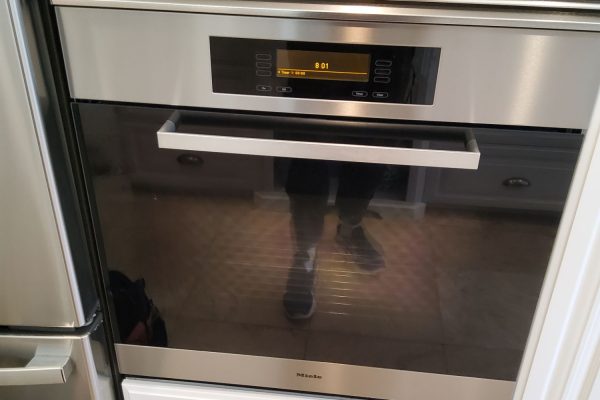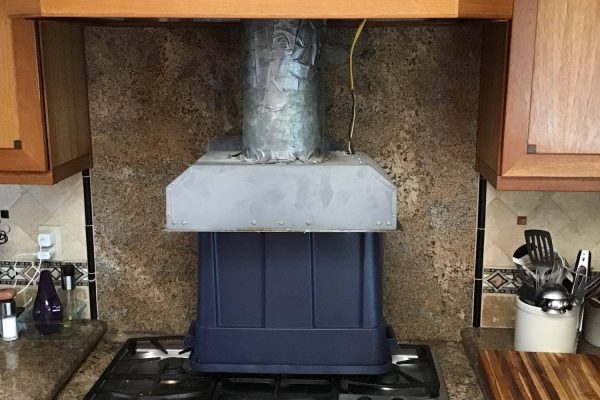Tumble dryers have become essential appliances in modern households, providing a convenient and efficient way to dry laundry. Central to their functionality are temperature and humidity sensors, which play a crucial role in regulating the drying process. However, when these sensors become damaged or malfunction, it can lead to suboptimal drying results, energy inefficiency, and potential safety concerns. In this comprehensive guide, we will explore the importance of temperature and humidity sensors, common signs of damage, potential causes, and practical solutions to address issues and ensure the optimal performance of your tumble dryer.
The Role of Temperature and Humidity Sensors
Temperature Sensors:
Temperature sensors in a tumble dryer monitor the heat levels during the drying cycle. They help regulate the temperature to ensure that it stays within the safe and effective range for drying clothes without causing damage.
Humidity Sensors:
Humidity sensors measure the moisture levels in the drum. These sensors play a crucial role in determining when the clothes are sufficiently dry, triggering the end of the drying cycle and preventing over-drying.
Efficient Drying Process:
The collaboration between temperature and humidity sensors allows the dryer to adapt its settings based on the specific conditions inside the drum. This results in an efficient and tailored drying process.
Signs of Damaged Temperature or Humidity Sensors
Incomplete Drying:
Clothes consistently come out of the dryer damp or inadequately dried, indicating that the humidity sensors may not be accurately gauging the moisture levels.
Over-Drying:
Conversely, over-drying may occur, leading to unnecessarily high energy consumption and potential damage to delicate fabrics.
Inconsistent Temperature:
Fluctuations in temperature during the drying cycle may suggest issues with the temperature sensors, impacting the overall performance of the appliance.
Extended Drying Times:
If the drying cycle takes longer than usual, it could be a sign that the sensors are not functioning correctly, causing the dryer to operate inefficiently.
Error Codes or Alerts:
Some modern dryers are equipped with diagnostic features that display error codes or alerts when there are issues with the sensors. Check the user manual for guidance on interpreting these codes.
Potential Causes of Sensor Damage
Accumulation of Lint:
Lint accumulation around the sensors can interfere with their functionality, leading to inaccurate readings and potential damage over time.
Physical Damage:
Physical damage to the sensors, such as bending or breakage, can occur due to various reasons, including rough handling, impact, or manufacturing defects.
Moisture Exposure:
Excessive moisture or water exposure, either from spills, leaks, or a humid environment, can compromise the integrity of the sensors and lead to malfunction.
Age and Wear:
Over time, sensors can experience wear and tear due to the constant monitoring of temperature and humidity levels. Aging sensors may become less accurate or fail altogether.
Improper Cleaning Practices:
Harsh cleaning agents or abrasive cleaning methods can damage the sensors. It is essential to follow the manufacturer’s cleaning recommendations to maintain sensor integrity.
Electrical Issues:
Problems with the electrical components connected to the sensors, such as wiring or circuitry issues, can result in sensor malfunction.
Troubleshooting and Solutions
Safety First:
Before attempting any troubleshooting, ensure the safety of the dryer by turning it off, unplugging it from the power source, and allowing it to cool if it has been in use.
Inspect for Visible Damage:
Carefully inspect the sensors for any visible signs of damage, such as bending, breakage, or moisture exposure. If damage is evident, the sensors may need replacement.
Clean Around the Sensors:
Gently clean the area around the sensors using a soft brush or lint-free cloth. Remove any lint or debris that may be obstructing their operation.
Follow Cleaning Guidelines:
Adhere to the manufacturer’s guidelines for cleaning the sensors. Use recommended cleaning agents and methods to avoid damage during maintenance.
Check for Moisture:
If the sensors have been exposed to moisture, ensure that they are completely dry before attempting to use the dryer. Moisture can cause temporary malfunctions.
Reset the Dryer:
Some dryers have a reset function that allows you to reset the sensors and clear error codes. Consult the user manual for instructions on how to reset your specific model.
Verify Wiring Connections:
Inspect the wiring connections associated with the sensors. Loose or damaged wiring can disrupt the communication between the sensors and the dryer’s control system.
Professional Inspection:
If you are unable to identify or resolve sensor issues, consider seeking professional assistance. Certified technicians can conduct a thorough inspection, diagnose the problem, and replace damaged sensors if necessary.
Preventive Measures
Regular Cleaning Routine:
Incorporate regular cleaning of the sensor area into your dryer maintenance routine. This prevents the accumulation of lint and debris that could interfere with sensor functionality.
Follow Manufacturer Recommendations:
Adhere to the manufacturer’s guidelines for cleaning and maintenance. Follow recommended cleaning practices to ensure the longevity and accuracy of the sensors.
Avoid Excessive Moisture:
Minimize exposure to excessive moisture by keeping the dryer in a dry environment and promptly addressing any spills or leaks in the vicinity.
Educate Household Members:
Educate users about proper cleaning practices and the importance of treating the dryer with care to avoid damage to the sensors.
Scheduled Professional Maintenance:
Consider scheduling periodic professional maintenance, where technicians can inspect and assess the overall condition of the dryer, including its sensors.
Temperature and humidity sensors are integral to the efficient and precise operation of a tumble dryer. By understanding their importance, recognizing signs of damage, addressing potential causes, and adopting practical solutions, you can maintain optimal drying results and prolong the lifespan of your appliance. Regular cleaning, adherence to manufacturer guidelines, and prompt resolution of any issues contribute to the reliability and accuracy of the sensors. If problems persist or if you are unsure about performing maintenance tasks, seek professional assistance to ensure the continued efficiency and safety of your tumble dryer.
Count on our services as the dependable solution for resolving household appliance issues! If your appliances need repair, fret not – reach out to Oceanside Appliance Service Center, and we’ll help eliminate any inconvenience.
With extensive experience in repairing household appliances of diverse brands and models, our highly qualified technicians possess profound knowledge and expertise in handling refrigerators, washing machines, dryers, dishwashers, stoves, ovens, and more.
We ensure a professional approach to every task, using only original spare parts for repairs. Our primary goal is to restore your household appliances to optimal condition.
Contact us:


